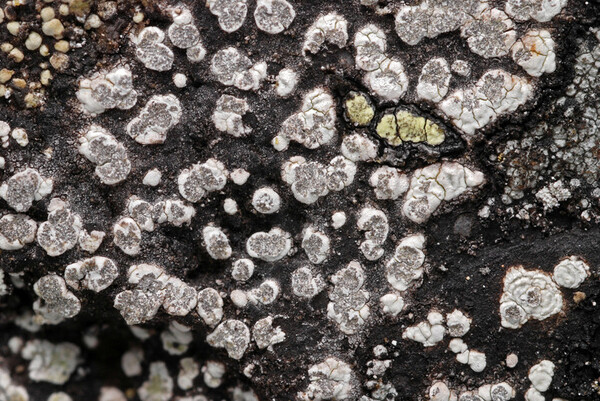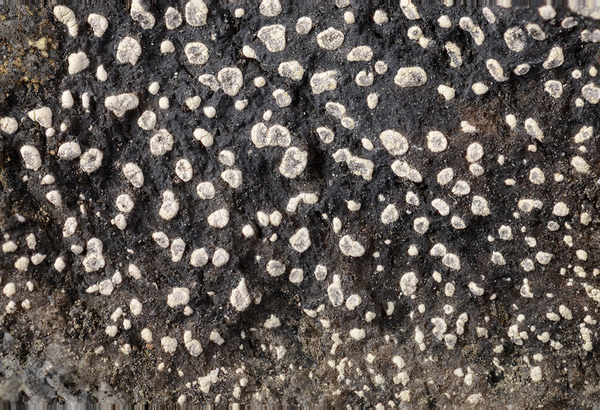Fuscidea gothoburgensis (H. Magn.) V. Wirth & Vězda
Beitr. Naturk. Forsch. Südwestdeutschl., 31: 92, 1972. Basionym: Lecidea gothoburgensis H. Magn. - Göteborgs Kungl. Vetensk. Vitterh. Samh. Handl., Ser., 4 29, no. 4: 2, 1925
Synonyms: Fuscidea maculosa (H. Magn.) Poelt
Distribution:
Description: Thallus crustose, episubstratic, whitish, cream-coloured, pale grey to grey-brown, areolate, most often sorediate, delimited by a dark prothalline line. Areoles developing on a usually visible dark hypothallus, 0.2-2.5(-4) mm wide, contiguous to usually discrete and scattered, often clustered, rounded to irregular in outline, flat to slightly convex, with a finely cracked surface; soralia developing in the centre of the areoles, orbicular, slightly concave, eroded or delimited by a thin, elevated thalline margin, rarely finally effuse, 0.2-0.5(-1.5) mm across, concolorous with thallus or darker grey. Medulla white, I+ blue (reaction often poorly evident). Apothecia rare, lecideine, 0.3-1(-1.7) mm across, sessile, with a dull black-brown, flat to convex, sometimes umbonate disc, and a concolorous to black, thin, persistent, often wavy proper margin, often with a white ring around the inner edge of the margin. Proper exciple brown in outer part, paler within; epithecium brown; hymenium colourless or faintly brownish; paraphyses simple or sparingly branched, weakly coherent in water, becoming free in K; hypothecium colourless. Asci 8-spored, clavate, with a thin external and internal K/I+ dark blue cap surrounded by a thick K/I+ pale blue apical cap, and with a K/I- apical tube in tholus, Fuscidea-type. Ascospores 1-celled, hyaline, broadly ellipsoid, 7-11 x 5-7 μm. Photobiont chlorococcoid. Spot tests: medulla and soralia K-, C-, KC-, P-, UV+ bluish white. Chemistry: divaricatic acid.
Note: an apparently a rare lichen found on steep surfaces of very hard siliceous rocks in shaded, cool habitats of upland areas, up to the nival zone, with several records along the Alpine chain outside the Italian territory. To be looked for in the Italian Alps.
Growth form: Crustose
Substrata: rocks
Photobiont: green algae other than Trentepohlia
Reproductive strategy: mainly asexual, by soredia, or soredia-like structures (e.g. blastidia)

Predictive model
Growth form: Crustose
Substrata: rocks
Photobiont: green algae other than Trentepohlia
Reproductive strategy: mainly asexual, by soredia, or soredia-like structures (e.g. blastidia)

Predictive model
 INDEX FUNGORUM
INDEX FUNGORUM
 GBIF
GBIF



